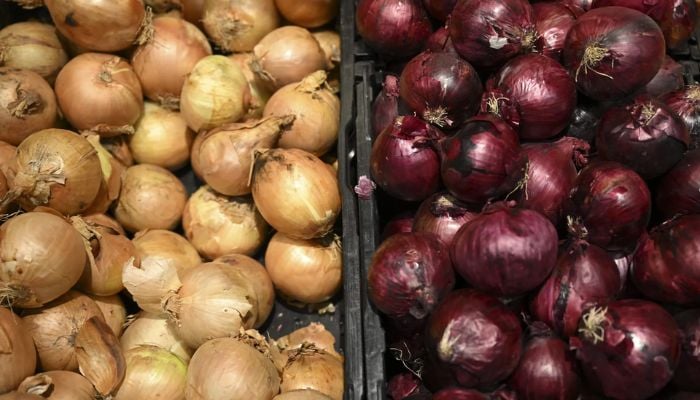Onions have now become 'more expensive' than meat
Agriculture officials think internal price manipulation and other regional crises are also to blame for soaring onion costs
January 24, 2023

In order to supplement declining domestic supplies and contain soaring expenses, the Philippines' agriculture authorities announced this past weekend that the nation would have to resort to importing over 22,000 tonnes of onions by March.
The local cuisine of the Southeast Asian country frequently uses onion and garlic as a foundation for many of its dishes. Around 17,000 metric tonnes of the vegetable are consumed in the nation on a monthly average.
However, according to the agriculture department's monitoring of market pricing in the Manila region as of Monday, red and white onions in the Philippines were being sold for as much as 600 pesos ($10.88) per kilogramme or approximately $5 per pound, reported Time.
According to the same market monitoring figures, that is almost three times as expensive as chicken and 25%–50% more expensive than hog or beef. A kilogramme of onions costs more than the Philippine minimum wage for a full day's work.
What led to rise in prices?
The president of the Philippines, Ferdinand Marcos Jr, who also serves as the agricultural secretary, is "personally liable" according to senators who want to look into the reason for the increase, according to a report by the outlet.
Price increases are partially a result of external factors.
Food prices are being pressured worldwide as a result of global inflation, which has many causes including the Russia-Ukraine conflict, supply chain hiccups, and extreme weather occurrences.
According to National Statistician Dennis Mapa in a briefing on January 5, the increase in consumer prices in the Philippines reached an all-time high of 8.1% in December, with onions accounting for 0.3 percentage points of the increase.
The business community holds the agriculture department accountable for its inability to predict supply accurately despite last year's warnings. A possible shortage of onion and garlic was predicted by agricultural officials as early as August when a local red onion variety only cost up to 140 pesos ($2.54).
The department, however, resisted imports, claiming that the current supply would be adequate, despite Philippine farmers' warnings that consumption was anticipated to surge during the holidays.
Agriculture officials think internal price manipulation and other regional crises are also to blame for the soaring onion costs. On December 13, Restoperez stated that the agriculture department suspects a criminal organisation hoarded onions and that an inquiry was in progress.









